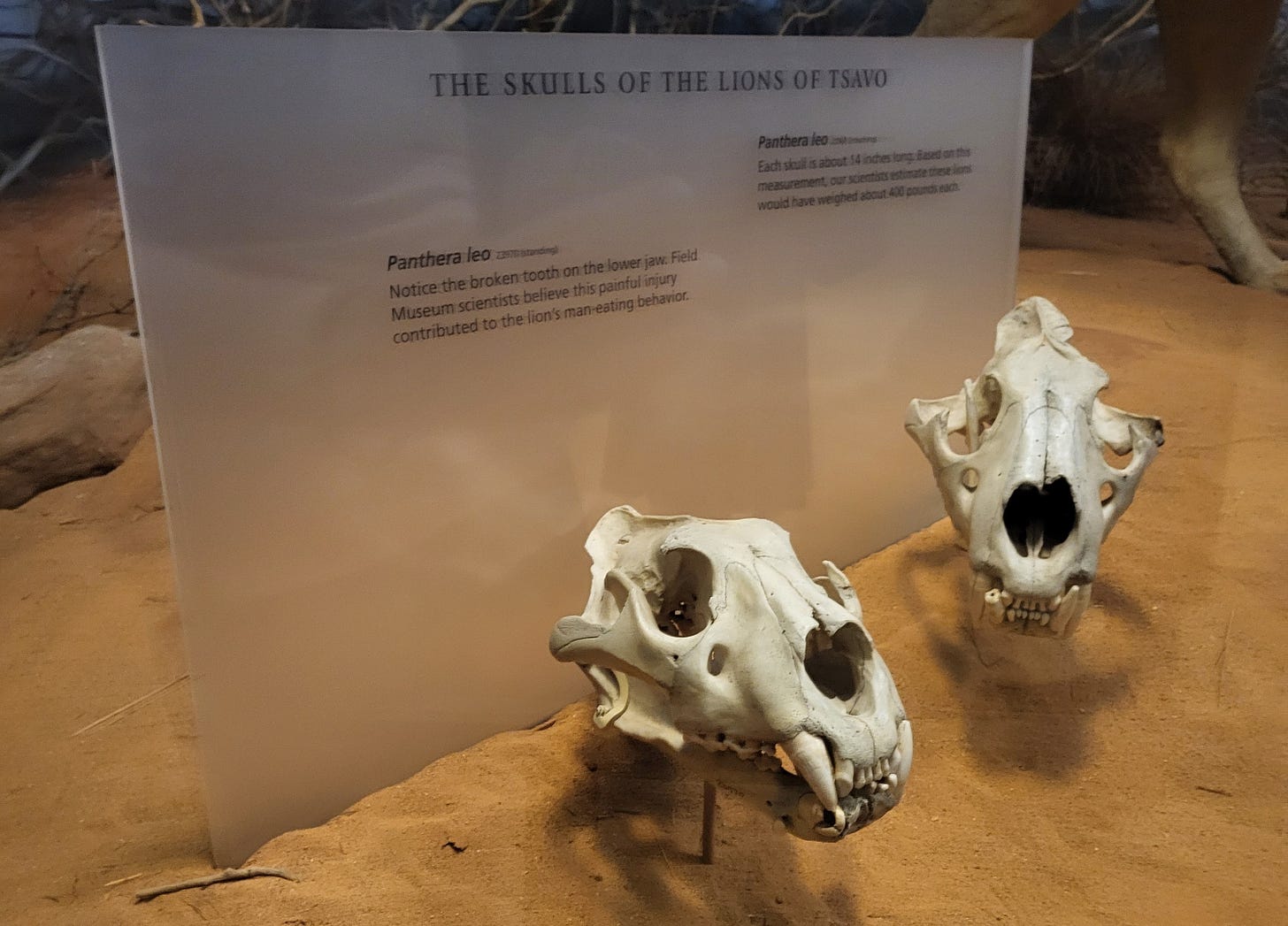When I was a little girl, my dad told me about visiting the Field Museum in Chicago and seeing the famous Man-Eating Tsavo Lions on display. My Dad then told me the story of the Tsavo Lions and the “brave Irish lad who killed them.”
The story begins in the year 1898 in the African nation of Kenya where a railroad was being built by the British. This was a big project, and thousands of men were brought from India to work alongside thousands of native Africans. It was super hot and everyone was underpaid. And an Irishman named John Henry Patterson, who incidentally was well paid by the standards of those times but was not able to collect his pay until the project was completed, was sent to oversee building a railway bridge over the Tsavo River.
Just after Patterson arrived, workers began mysteriously disappearing and were later found dead.According to the book Patterson wrote afterwards, for nine month two maneless, male lions stalked the area killing and devouring as many as 135 people.Patterson set traps and tried several times (unsuccessfully) to ambush the lions from a tree.
After hundreds of workers quit out of fear and building the railroad came to a halt, Patterson finally killed the first lion in December 1898 and the second lion in January of 1899. Both lions were unusually large, with one measuring 9 feet 8 inches long.
Patterson published a book about his adventure and went on to give special talks, mainly because he wasn’t ever able to collect all the money he was owed from the railroad job. In 1924, just 5 years before my Dad was born, Patterson sold the lions' skins and skulls to the Chicago Field Museum for $5,000, which in 2025 dollars is about $91,847.14. Although the skins arrived in poor condition, the museum experts reconstructed the lions and put them on display.
I had to wait nearly 40 years to visit the Field Museum. On a trip to Chicago in 2011, I immediately walked to the Tsavo Man-Eaters exhibit only to discover you could barely see what was on display inside because the overhead lights had burnt out. As cool as The Field Museum is, I left disappointed.
Fortunately The Field Museum did some updating, and I returned recently to discover the Tsavo Man-Eaters now have a cool multimedia interactive exhibit space and working lights!
Since 2020, many scientists have studied the Tsavo Man-Eaters to try and figure out why they started killed humans, as normal lions rarely do that. The most popular theory is infected teeth prevented them from hunting larger prey animals. In the above photo, you can see there are deformed or missing teeth in the original skulls. Another theory is exhausted humans are squishy and don’t put up much of a fight when they’re asleep, so they made for easy meals.
And that’s my family’s connection to the man-eating lions, I hope you found it interesting, maybe even inspiring.
Resources
DNA reveals surprises trapped in teeth of “Tsavo man-eating lions”









